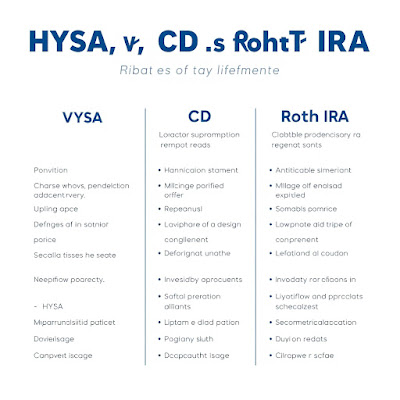10 Smart Ways to Budget on a Minimum Wage (2025 Guide)
Living on a minimum wage in the USA can feel like a daily juggling act. With rising costs in 2025, from groceries to gas, stretching every dollar is more than just smart—it’s essential. If you’re earning under $35,000 a year, you’re not alone—and you’re not out of options. This guide offers realistic budgeting for low income 2025 situations, tailored specifically for hardworking individuals like you.
Whether you're flipping burgers, cleaning offices, stocking shelves, or working gigs, these smart budget tips for low income workers are designed to help you take back control—without shame, stress, or unrealistic advice.
Let’s dive into 10 practical and empowering ways to budget smartly on a minimum wage.
1. Track Every Dollar First
Before you budget, you need to know where your money is going.
Use Free Budgeting Tools:
Every Dollar (Free Version) – Zero-based budgeting made simple.
Mint – Automatically tracks spending and gives visual reports.
Good Old Pen & Paper – Still works great if you prefer offline.
💡 Zero-Based Budgeting Explained: This method assigns every dollar a job—whether it’s bills, savings, or groceries—so nothing goes to waste. Your income minus expenses should always equal zero.
2. Prioritize the “Four Walls” (Dave Ramsey Method)
When money is tight, focus on what matters most.
The Four Essentials:
Food
Shelter (Rent or Mortgage)
Utilities (Electricity, Water, Internet)
Transportation (Gas or Transit)
Cut anything outside these four until your income grows. Entertainment, subscriptions, and even dining out can wait.
3. Use Cash Envelopes for Essentials
Cash creates discipline—and visual clarity.
How It Works:
Withdraw cash weekly for things like groceries and gas.
Put the cash in labelled envelopes.
Spend only what's in the envelope—no cards, no overspending.
This method helps many low-income workers stay within a spending limit.
4. Take Advantage of Community Resources
You’re not failing—there are systems meant to help you get back on track.
Try These Resources:
Feeding America Food Pantries – Find a local pantry
211.org – Local help with utilities, childcare, and housing
LIHEAP – Federal energy assistance
WIC & SNAP – Nutritional aid for families
These programs are here for realistic budgeting for low income 2025. Use them as stepping stones, not crutches.
5. Meal Plan on a Budget
Food waste = money waste. A plan = savings.
Apps & Tools to Try:
Mealtime (free app)
Yummy
USDA’s Budget Meal Planner – Check it here
Prepping meals based on sales and leftovers can save $100 or more each month.
🛒 Buy in bulk, cook in batches, and reuse ingredients.
6. Automate Small Savings
You don’t need to save big—you need to save consistently.
Apps That Help:
Chime – Rounds up purchases into savings
Acorns – Invest spare change
Digit – AI-based savings
Even $5/week adds up to over $250 a year. That’s your emergency fund in the making.
💰 Saving automatically is one of the most smart budget tips low income workers can start today.
7. Avoid Buy Now Pay Later & Payday Loans
These may feel like a lifeline, but they often pull you deeper into debt.
Why They Hurt:
BNPL: Multiple due dates = chaos and overdraft fees
Payday Loans: 300%+ APR = long-term debt trap
Safer Alternatives:
Secured Credit Cards – Build credit with low risk
Local Credit Union Loans – Often have better terms
📉 Don’t rent tomorrow’s pay check just to fix today’s problem.
8. Use Side Hustles to Boost Budget
Even an extra $50 a week can be a game changer.
Low-Stress, High-Impact Gigs:
Door Dash/ Uber Eats – Flexible hours
Survey Junkie / Swagbucks – Online tasks during breaks
Babysitting / Pet Sitting – Cash gigs in your neighbourhood
💼 Just 5–10 hours a month can give you enough breathing room to pay off bills or build savings.
9. Look for Budget-Friendly Insurance Options
Medical bills can wreck a tight budget. Protect yourself smartly.
Low-Income Insurance Avenues:
Medicaid – Free or low-cost coverage based on income
CHIP – Children’s insurance program
ACA Marketplace Subsidies – Check eligibility at HealthCare.gov
👉 Read more in our guide: Understanding the 50/30/20 Rule: Budgeting Made Simple
10. Revisit Your Budget Monthly
Your expenses, income, or priorities can change—so should your budget.
Try This:
Set a monthly “money meeting” with yourself or your partner.
Use a printable tracker or spreadsheet to compare actual vs planned spending.
Adjust categories as needed (e.g., gas up, cut dining out).
📄 Get our freebie: Printable Monthly Budget Tracker – Download Here
FAQs: Budgeting on Minimum Wage USA
Can I actually budget on minimum wage in the USA?
Yes! It’s not easy, but using smart tools, cutting extras, and accessing community support can make it possible—even empowering.
What’s the best budgeting app for low income?
For free use, try Mint or Every Dollar. For automation, Chime and Digit are great for micro-saving.
How do I prioritize bills when money is tight?
Start with the “Four Walls”: food, shelter, utilities, and transport. Pay these first before credit cards or streaming services.
What’s the 50/30/20 rule and can I use it on a minimum wage?
Yes, with flexibility. It splits income into needs (50%), wants (30%), and savings/debt (20%). On minimum wage, aim for 70/20/10 or even 80/15/5 if needed.
How do I build an emergency fund on low income?
Start small. Save $5–10 per week using automation tools. Cut one expense (like daily coffee) and redirect that money into savings.
Final Thoughts: You Can Budget on a Minimum Wage
Budgeting isn’t about deprivation—it’s about direction. With the right tools, habits, and mindset, even a low income can support a stable, stress-free life.
You’re already working hard. Now let your budget work smart.










Comments
Post a Comment
https://thesavvysaversociety.blogspot.com/p/comment-policy.html